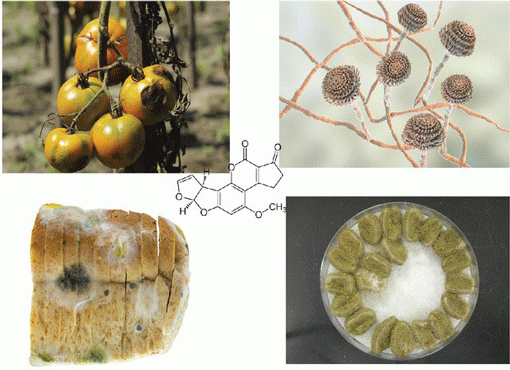How fungi construct protein to produce potentially deadly toxins
Toggle
Protein discovery may lead to new ways to contain infection risks to plants and animals posed by other fungi
Research performed in Dr Özgür Bayram’s Fungal Genetics and Secondary Metabolism (FGSM) laboratory in Maynooth University has resulted in the discovery and characterisation of a ‘scaffold’ protein used by the organism to help produce substances that can be either beneficial or toxic.
The results of the study performed by Dean Frawley, Betim Karahoda and Dr Özlem Sarikaya-Bayram of Maynooth University’s Department of Biology have been published in international peer-reviewed journal Nature Scientific Reports. The protein discovered by the team, known as HamE in fungus Aspergillus nidulans, was shown to be critical for fungal growth, development and metabolite production, and may lead to new ways to contain infection risks to plant and animals posed by other fungi.
In Aspergillus nidulans, a group of proteins known as Mitogen-Activated Protein (MAP) kinases are activated when the fungus detects certain pheromones in its external environment. This results in fungal cell mating and the production of various compounds, known as secondary metabolites, which have the potential to be either beneficial or detrimental to human health.
For example, Aspergillus nidulans produces incredibly useful metabolites like the essential antibiotic penicillin and the anti-tumour agent terrequinone A. However, it can also produce toxic compounds such as sterigmatocystin – which has been observed to induce hepatomas in rats and pulmonary tumours in mice, as well as renal lesions and alterations in the liver and kidneys of certain primates.
While there was knowledge of how this fungus can respond to the pheromone signal and produce these compounds, little was known of the regulation of these proteins and the structure of the protein signalling architecture.
The researchers discovered that the protein HamE is critical for fungal growth, development and metabolite production, with the work showing that HamE interacts with and acts as a binding platform for the MAP kinases.
HamE positively regulates the activation of these proteins and as a result, it is necessary for signal propagation to the nucleus, allowing for the fungus to undergo cell mating and metabolite production.
Overall, this work has highlighted the influence of the HamE scaffold protein in fungal cell signalling, growth and secondary metabolite production, something which may help researchers understand and potentially control similar metabolite production in other fungi.
Dr Özgür Bayram explains: “The next steps of this work involve the application of this knowledge to other more relevant filamentous fungal species, such as Aspergillus flavus and Aspergillus fumigatus.”
“Aspergillus flavus produces dangerous compounds like aflatoxins which cause crop contamination and liver carcinomas, while Aspergillus fumigatus produces toxins such as gliotoxin, which can result in lethal infections in immunocompromised individuals.”
“Future work will aid in characterising the proteins and methods of signalling utilised in these fungi to promote reproduction and secondary metabolite production, which will contribute to developing strategies for reducing the risks of plant and human infections.”
